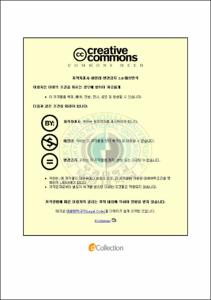형태 초점 의사소통 접근법을 활용한 효과적인 문법수업 연구
- Alternative Title
- A Study of The Effective Grammar Instruction Employing The Focus-on-form Approach
- Abstract
- The purpose of this study is to examine the effects of three focus-on-form instructional grammar learning models within Korean high schools. Its findings will then be compared and contrasted to those of Lee's grammar learning model research (2008). Based on these analyses, suggestions for effective grammar instruction applicable to target grammar forms will be made.
For this study 122 high school students in the first grade were randomly divided into three experimental groups and one control group. The four groups took a pretest, an immediate post-test, and a delayed post-test on target language forms before and after treatments respectively. The target grammar form for this study was the past forms of modals (modal+have+p.p.).
The students in each experimental group were provided with different focus-on-form instructions proposed by Doughty and Williams (1998). The first experimental group (Model 1 Group) was given brief rule explanations by a teacher and then engaged in focus-on-form activities. Alternatively, the second experimental group (model 2 Group) received detailed rule explanations from a teacher, followed by controlled activities and focus-on-form activities. Finally, the third experimental group (model 3 Group) had only focus-on-form activities without any explanation about the rules. The focus-on-form activities included input-based activities and output-based activities.
The results from the pre-test and the post-test are as follows. First, according to the statistical analyses the four groups did not demonstrate a significant difference in scores on the immediate and delayed post-tests.
Second, the control group, as well as the three experimental groups received higher scores on the post-tests than the pretests. Possible conclusions for this result are that the control group was not restricted enough by the experimental teacher or the control group were exposed to further instruction outside of this experiment. For example, the students in the control group might have learned the target grammar form from a school textbook or from private institutes. Alternatively, the control group might have become aware of the target grammar by taking a pretest and thus tried to learn it on their own.
Lastly, the results of this study are statistically comparable with Lee's research (2008). However, with this study, comparison of the test results demonstrated Model 3 instruction to be the most effective, while Model 1 instruction was the most effective in Lee's experiment (2008). Based on these conclusions, it is clear that the focus-on-form approach can be applied to grammar instruction by utilizing its three models.
- Issued Date
- 2008
- Awarded Date
- 2008. 8
- Type
- Dissertation
- Publisher
- 부경대학교 교육대학원
- Alternative Author(s)
- Choi, Mi Sook
- Affiliation
- 부경대학교 교육대학원
- Department
- 교육대학원 영어교육전공
- Advisor
- 조윤경
- Table Of Contents
- Ⅰ. 서론 = 1
1.1 연구의 필요성 및 목적 = 1
1.2 연구과제 = 4
1.3 연구의 제한점 = 4
Ⅱ. 이론적 배경 = 6
2.1 문법 교육의 필요성 = 6
2.2 형태 초점 의사소통 접근법의 정의 및 종류 = 10
2.3 형태 초점 의사소통 접근법의 수업모형 = 20
Ⅲ. 연구 방법 = 24
3.1 연구 참여자 = 24
3.2 연구 기간 = 25
3.3 연구의 도구 = 25
3.4 연구의 절차와 내용 = 27
3.5 자료 분석 = 31
Ⅳ. 연구 결과 및 논의 = 32
4.1 기술통계 = 32
4.2 사전 동질성 검증 = 34
4.3 집단 간 사후시험 점수 비교 = 35
4.4 집단 내 성취도 향상 검증 = 37
4.5 논의 = 43
Ⅴ. 결론 및 제언 = 45
참고문헌 = 48
부록 = 53
- Degree
- Master
- Files in This Item:
-
-
Download
 형태 초점 의사소통 접근법을 활용한 효과적인 문법수업 연구.pdf
기타 데이터 / 890.08 kB / Adobe PDF
형태 초점 의사소통 접근법을 활용한 효과적인 문법수업 연구.pdf
기타 데이터 / 890.08 kB / Adobe PDF
-
Items in Repository are protected by copyright, with all rights reserved, unless otherwise indicated.